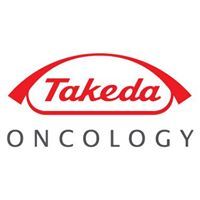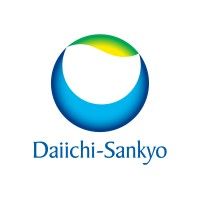Contract development and manufacturing in the Asia-Pacific (APAC) market is poised for explosive growth. The region has been the focus of significant expansion, and the market size is expected to top $108 billion by 2029. Outsourcing trends, increased healthcare expenditure and demand for injectable drugs and cell and gene therapies have made clinical services organizations integral to drug development value chains. Clinical services organizations help pharmaceutical manufacturers manage growing regulatory complexities, high development costs and increased competition. This enables pharma companies to focus on their core competencies, says Kevin Cheong, Clinical Operations Director APAC for Almac Group.Pharmaceutical companies should prioritize research and developmentrather than being bogged down by supply chain logistics, supply chain management and production matters in-house, Cheong says. By outsourcing these noncore functions to contract development and manufacturing organizations, companies can streamline their internal processes, allowing them to focus on what they do best: innovation in research and development.Understanding market demandUnlike more mature Western markets, the APAC market has attracted an influx of new pharma companies that are often unfamiliar with the processes and standards required to succeed globally. Their inexperience can present challenges for securing clinical trial approvals and successfully commercializing new drugs. Emerging companies often lack the leverage needed for greater efficiencies and lower costs, Cheong adds.Recent data show that the pharma sector has grown, but concerns about supply chain disruptions and regulatory compliance remain strong. Partnering with a clinical services organization like Almac can help pharma companies remain competitive.The generic and biosimilar drug market in the APAC region is expected to grow at a compound annual rate of 31.6 percent from 2024 to 2029. Upcoming patent expirations on blockbuster drugs have also created opportunities for generic production. As a result, the governments in China, India and South Korea have allocated significant financial support and regulatory guidance to boost domestic pharmaceutical industries. Cheong notes that foreign investments from Western pharmaceutical companies in the APAC region also have increased, further strengthening the sector.One significant advantage that Almac brings to the table is our scale, he says. With more than 300,000 shipments annually to over 120 countries, we have the volume to negotiate better terms with suppliers and contractors, whether its for distribution or sourcing commercial drugs.Advancements in biopharmaceutical production are also fueling the growth of clinical services organizations in the APAC market. These advancements have led to increased demand for specialized services, particularly in biologics, biosimilarsand cell, tissue or gene therapy, says Cheong. As production technologies become more sophisticated, clinical services organizations that adopt innovations like single-use systems and continuous manufacturing can offer more competitive, efficient services, driving market expansion.Improved regulatory compliance and substantial investments in infrastructure have positioned clinical services organizations in Asia-Pacific to better serve global markets, further boosting market growth, he adds.Overcoming existing challengesRegulatory compliance remains a significant challenge for clinical services organizations in the APAC region. Cheong points to diverse regulatory environments across member countries that often result in delays in product approvals while organizations navigate multiple regulatory frameworks. The complexity and variation in these regulations can create confusion within organizations, leading to errors and misinterpretations that further complicate the compliance process, he says. Inconsistencies in regulatory standards across the region (and) variations in manufacturing and quality assurance practices, driven by differing regulatory requirements, may affect the final product.Prioritizing a more harmonized regulatory approach would make compliance easier. It would reduce the burden on clinical services organizations and mitigate many of the current hurdles. Harmonization would also lead to improved efficiency within the regulatory processes by reducing delays and operational costs and enabling faster commercialization. This would benefit both pharma companies and consumers.Companies like Almac Clinical Services have recognized the importance of a robust regulatory compliance strategy, Cheong says. Our Regulatory Compliance Division is actively engaged in ensuring that the company meets the diverse regulatory requirements across different countries, which allows us to ensure compliance across multiple jurisdictionswithout compromising product quality.Focusing on the future Advancements in biopharmaceutical production are crucial to the growth of clinical services organizations in the APAC market. These have increased demand for specialized services, particularly in biologics, biosimilars and complex therapies. Cheong believes that as production technologies become more sophisticated, clinical services organizations that adopt innovationslike single-use systems and continuous manufacturingcan offer more competitive, efficient services and drive market expansion. Embracing artificial intelligence (AI) could also help.We see some promising uses of AI, particularly in areas like supply chain management, he says. AI algorithms can analyze historical data to improve demand forecasting. Given the vast amounts of data generated from managing shipments across multiple sites and countries, AI has the potential to simplify supply chain processes.Clinical services organizations, including Almac, have prioritized investments in facilities and equipment and AI-driven systems could manage predictive maintenance schedules could play a significant role in managing processes from predictive maintenance schedules to logging investigations and corrective actions.Clinical services organizations like Almac Clinical Services allow pharma companies to prioritize growth while focusing on their core strengths. With our expertise, scale and technological advancements, Cheong adds, we are well-positioned to support our clients, ensuring mutual success in a competitive global market.To learn more about Almac Clinical Services visit:https://www.almacgroup.com/clinical-services/ To read the first article in this series, please click here. '











